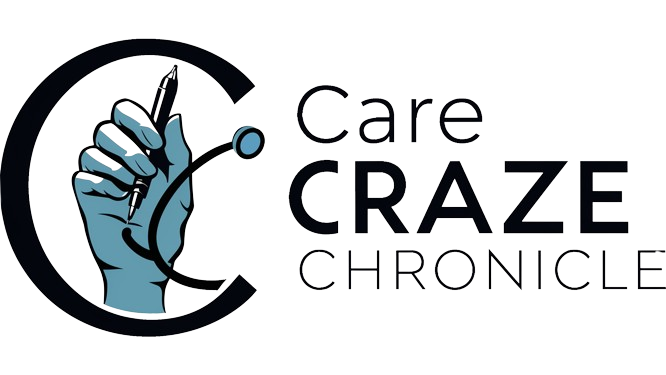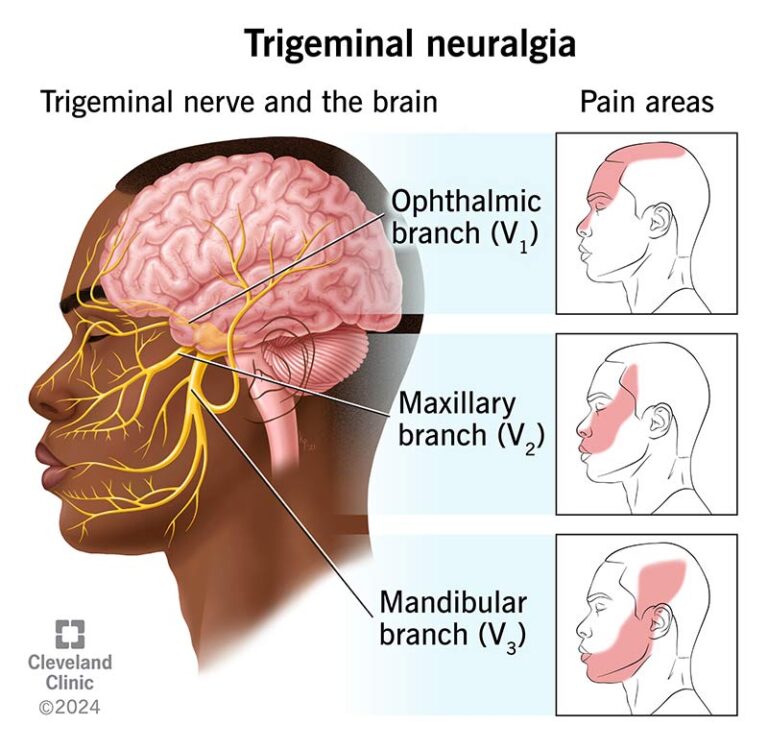What are the symptoms of trigeminal neuralgia?
The main symptom of trigeminal neuralgia is sudden, intense pain in your face — usually on one side. The pain may be an electric shock-like or stabbing sensation. You may also have facial muscle spasms during the attacks. In between pain attacks, you may feel the following sensations:
- Burning.
- Throbbing.
- Numbness.
- Dull achiness.
There are two main forms of trigeminal neuralgia based on how you experience symptoms:
- Paroxysmal TN: You experience painful episodes that are sharp, intense and sporadic. During an episode, you may feel pain and/or a burning sensation in your face that can last anywhere from a few seconds to two minutes. Though there will be pain-free breaks in between episodes, this can continue for up to two hours.
- TN with continuous pain: This type is less painful and intense, but the pain is more frequent. You feel constant pain, notably stabbing and/or burning sensations, along with persistent aches and pains. With atypical trigeminal neuralgia, you may have more difficulty managing the symptoms.
Typically, trigeminal neuralgia is unilateral, meaning it only affects one side of your face. In rare cases, it can affect both sides of your face (bilateral) but not at the same time. In some cases, trigeminal neuralgia can get worse over time with longer and more frequent pain attacks.
Trigeminal neuralgia symptom triggers
It’s mostly simple activities that require you to move or touch your face that can trigger painful TN episodes, including:
- Shaving, putting on makeup or washing your face.
- Eating and drinking.
- Brushing your teeth, flossing and using mouthwash.
- Talking and smiling.
- Applying any pressure to your face, especially to your cheek or jawline.
- Encountering a light breeze or gust of wind on your face.
The pain attacks rarely occur during sleep.
What causes trigeminal neuralgia?
In general, pressure on or damage to your trigeminal nerve causes TN. Healthcare providers categorize trigeminal neuralgia based on the specific cause:
- Primary (classic) TN: This type happens when a blood vessel (usually the superior cerebellar artery) pushes on part of the trigeminal nerve root (nerve compression). It’s the most common cause.
- Secondary TN: Secondary TN happens when another condition damages or affects your trigeminal nerve, like multiple sclerosis (MS), a tumor or arteriovenous malformation. People with secondary TN are more likely to be younger and have pain on both sides of their faces. Only 15% of TN cases are secondary.
- Idiopathic TN: Providers diagnose idiopathic TN when there’s no clear cause of your facial pain after doing diagnostic tests.
What are the risk factors for trigeminal neuralgia?
Factors that may increase your risk of developing TN include:

